The ‘Anne of Cleves’ Estate
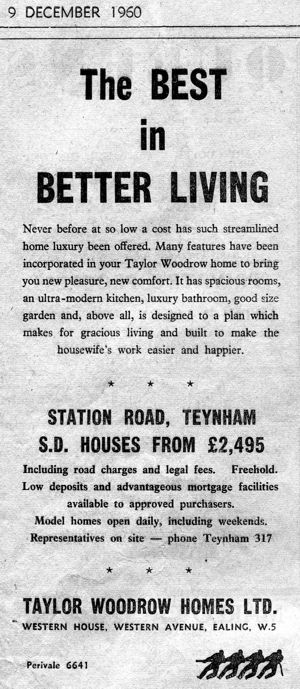 Fascinating times in Teynham in the late 1950s and 60s as the village expanded rapidly with ‘foreigners’ moving in to the new properties. At least ‘foreigners’ was what they were called by the older locals, though a couple of East Kent Gazette articles of the time made it clear the newcomers received a warm welcome and were more than happy with their new surroundings. The area being developed at the time was around Station Road and Bradfield Avenue and was known as the Anne of Cleves estate. It was named after one of King Henry VIII’s six wives, who he’d first met in Kent, and it was in Teynham that Henry ordered his fruiterer to plant apple and cherry trees, establishing the county’s reputation as the ‘Garden of England’. This is what the Gazette articles had to say about the expansion of Teynham:
Fascinating times in Teynham in the late 1950s and 60s as the village expanded rapidly with ‘foreigners’ moving in to the new properties. At least ‘foreigners’ was what they were called by the older locals, though a couple of East Kent Gazette articles of the time made it clear the newcomers received a warm welcome and were more than happy with their new surroundings. The area being developed at the time was around Station Road and Bradfield Avenue and was known as the Anne of Cleves estate. It was named after one of King Henry VIII’s six wives, who he’d first met in Kent, and it was in Teynham that Henry ordered his fruiterer to plant apple and cherry trees, establishing the county’s reputation as the ‘Garden of England’. This is what the Gazette articles had to say about the expansion of Teynham:
Kent’s villages are some of the most beautiful in the country and in many of them life goes on at a leisurely happy-go-lucky pace. But Teynham, once a small cluster of buildings, has seen a rapid increase in population recently and it looks like continuing in the future.
Most of those who have recently moved to Teynham are Londoners, now living on private new housing estates and seeking ‘a little peace and quiet’ after city life. The general opinion of residents is that the newcomers are welcome and ‘they’re getting things done.’
This is because the village has always been noted for a lack of interest in local organisations. There has been no support for any clubs or associations which have been formed, and consequently there is not a great deal of entertainment for the villagers.
But now the Londoners are taking a grip on their new ‘home’, and have already begun to get things moving. Scout groups have been formed while the organisation which has, perhaps, become the most active is the Teynham Residents’ Association.
Traders also welcome the new influx for obviously it means added prosperity. Mr L Blain, a butcher, says that in Barrow Green the population has almost doubled in the last few years. “It all means that sales go up and there is added prosperity to the village in general,” he said.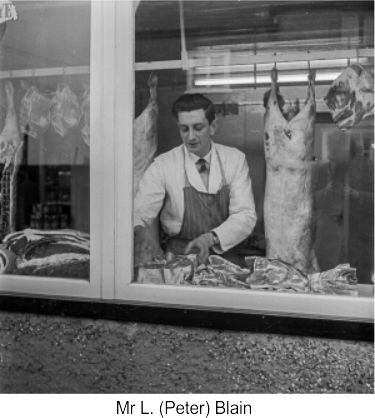
The Vicar of Teynham, the Rev J Markham, comments: “We have been able to restart the Sunday morning service for the family. My predecessor found it necessary to discontinue this service through lack of support.”
Although it brings increased prosperity, a growing population also presents some problems. Perhaps the biggest headache it could produce is at the village school. The Headmaster, Mr H A Clarke, explained the position: “At present we have 263 children attending the school. Accommodation is quite sufficient now, since we had some new classrooms built, and it would be possible for me to take up to 300 children. But if it were necessary to take more children than that, then the difficulties would arise.”
Mr Clark said the school was delighted to welcome the new children as they broadened the outlook of the other pupils. Most of the children from the estate had been to large city schools, but they were fitting in very well, he said.
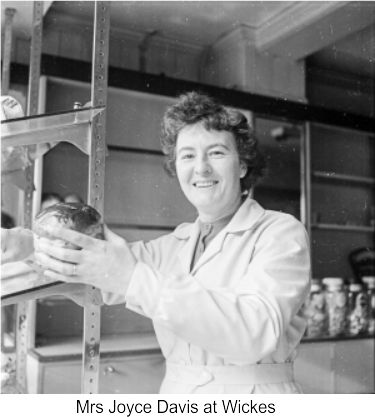 Working in Wicks, the baker’s shop in the High Street, is Mrs Joyce Davis, and as far as she is concerned there is only one thing Teynham needs – “A zebra crossing or a road traffic control for the children who have to cross the main road to go to school each morning. The main road is rather terrifying. A lot of the children come into the shop to ask me to help them over the road.”
Working in Wicks, the baker’s shop in the High Street, is Mrs Joyce Davis, and as far as she is concerned there is only one thing Teynham needs – “A zebra crossing or a road traffic control for the children who have to cross the main road to go to school each morning. The main road is rather terrifying. A lot of the children come into the shop to ask me to help them over the road.”
The postmistress of Teynham, Mrs D A King, said: “We all welcome the Londoners coming here. They brighten up the place.”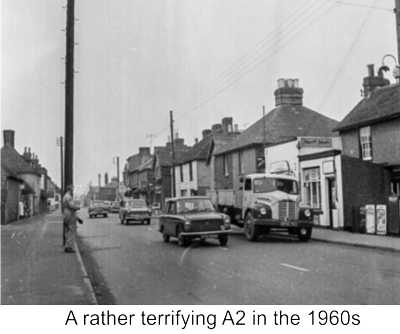
But how about the new residents? What do they think of their new surroundings? Many regard Teynham as a little ‘dead’ after the hectic life of the city – but they are trying to get the village on its toes.
Typical of many on the estate is Mrs D E Castle, who moved in with her husband and their three-year-old son Ian from Beckenham, and likes the place so much they never want to go back to the London suburbs. She said the food she gets in the village is cheaper than she’s been used to.
A complaint voiced by Mrs Bernard Cook, one of the very first to move on to the estate, was that there were not enough amusements for teenagers. It was ideal for adults who liked a quiet life, she said, and also for young children who could play out of harm’s way, but for those in between there was nothing. She and her husband have a three-year-old son, Steven, who will not be able to find the same amusements as his parents had in their youth. “When we grew up,” said Mrs Cook, “there were plenty of cinemas and dance halls, but not round here.”
Mr E Elkins told the Gazette he was impressed with what he had seen of the area so far, and they do not intend to treat Teynham just as the place where they have a house but want to become part of the village. Mr Elkins is going to transfer his work locally, and said he would like to join the Residents’ Association and take a real interest in local affairs – not as a Londoner, but as a Teynham villager.
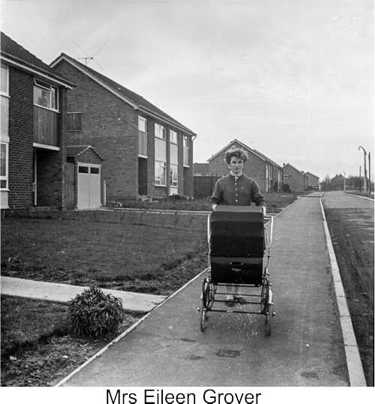 Mrs Eileen Grover, who lives in Station Road, said: “I find that the locals are much more friendly here. In London I did not even know the name of the person living a few doors away but here they are like one happy family.” Her husband, like 80 per cent of other men who have recently moved to Teynham, works in London and travels daily. The 50-minute journey is adequate for these early morning travellers to the city, while for the railway at Teynham the new residents have meant a 150 per cent increase in rail travel.
Mrs Eileen Grover, who lives in Station Road, said: “I find that the locals are much more friendly here. In London I did not even know the name of the person living a few doors away but here they are like one happy family.” Her husband, like 80 per cent of other men who have recently moved to Teynham, works in London and travels daily. The 50-minute journey is adequate for these early morning travellers to the city, while for the railway at Teynham the new residents have meant a 150 per cent increase in rail travel.
Teynham station’s head porter, Mr H G Mumm, said he estimated about 150 people travel to London from Teynham – on either the 6.57 or 7.25 – every morning. Some credit for the increase must, of course, go to the electrification of the railways which took place in June 1959. The stationmaster, Mr K B Gambrell, who has known the station since 1927, said receipts were doubled and he expected to see the service better still in the future.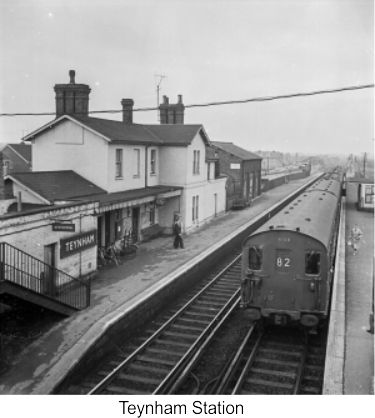
One of Teynham’s elderly residents, 67-year-old Mr Alfred T Gibbons, has lived in the village since 1937 and has seen many changes in the way of housing development.
He said: “It is not so much the changes which have taken place which has surprised me, but the rate of change. Rapid development has taken place in the last few years and I predict it will continue in the future.” He does not resent the Londoners – he calls them ‘foreigners’ – who have recently moved into the village, for he feels it was inevitable that Teynham should grow.
Compiled from material
kindly provided by John Tilling.
Original East Kent Gazette pictures kindly provided by
Sittingbourne Heritage Museum.